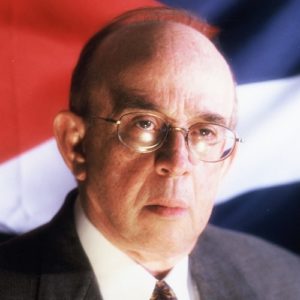 The death of Frank País. On July 30, 1957, the National Coordinator of the “26 of July Movement,” Frank País was killed by agents of Colonel José María Salas Cañizares, a sociopath that terrorized the youths of Santiago de Cuba.
The death of Frank País. On July 30, 1957, the National Coordinator of the “26 of July Movement,” Frank País was killed by agents of Colonel José María Salas Cañizares, a sociopath that terrorized the youths of Santiago de Cuba.
In 1953, Frank began teaching at “El Salvador” school, adjacent to the Second Baptist Church in the “Sueño” neighborhood. He also taught Sunday school at the church. A year later he enrolled in the University of Oriente, at the “Escuela de Pedagogía.” There he joined the students struggle against the Batista’s regime. By 1955 Frank País was a full fledged fighter in the Cuban underground. A lucid teacher, a devoted Christian and a man of action.
By the end of December (1955), Frank País met with José Antonio Echeverría, the former president of the University of Havana Student Federation (FEU) and leader of the militant Directorio Revolucionario. They had met before and developed close bonds of trust and ideals, specially the Rights of Individual Freedoms and a visceral rejection of “Caudillismo.”
José Antonio invited Frank to join the Directorio, but by this time he had already merged his clandestine organization (Acción Nacional Revolucionaria) with the “26 of July Movement” while Fidel was in Mexico. Frank had forged the most discipline and cohesive revolutionary forces in Oriente. For Castro, the immediate contribution of Frank País was huge and proved to be decisive at the time of Castro’s catastrophic “Granma” landing.
What could have been the historical impact if Frank País and José Antonio Echeverría, had joined forces against the dictatorship of Batista? A poignant speculation on the imponderable outcome of circumstances. They both died in 1957, twenty weeks apart. Jose Antonio on March 13 (the assault on the Presidential Palace in Havana) and Frank on July 30, gunned down in Santiago.
As the rebellion grew in intensity, Castro, exiled in Mexico, felt he was becoming a marginal figure. Frank, the charismatic teacher from Santiago, was heading the clandestine operation of the “26 of July Movement” and José Antonio was becoming a national hero. Castro knew that his quest for power was vanishing. He had to return, and soon. Jorge Valls, an outstanding poet and thinker wrote: “Fidel’s first and most implacable war was not against Batista at all, but against any competitive revolutionaries. Under no circumstances was he about to be preempted.”
In September 1956, Frank País traveled to Mexico for a final briefing on Castro’s return. The plan called for Castro’s landing near Niquero, Oriente and a surprised uprising of the Frank’s clandestine forces in Santiago.
On November 25, the overloaded yacht Granma sailed from the Tuxpan River in Yucatan. The next day, Frank País received a cipher note with instruction that Granma was at sea on its way to “Playa Colorada” beach. Frank got in touch with Celia Sánchez and instructed her to ready the reception teams in the landing area and went to alert the Santiago underground for the imminent fight.
As scheduled, on November 30, Frank País led the Santiago uprising. Taken by surprise, the Moncada Garrison hesitated and the rebellion spread into the city streets. Dressed in green fatigue uniforms with red and black armbands, the movement took control of the downtown area. Jorge Sotus occupied the maritime police station and burned it down. They cut power lines, sabotaged railroad tracks and bridges, but by midafternoon, the army began retaking the city and crushed the uprising. Frank País barely escaped. Finally, on December 2, the Granma shipwrecked at “los Coyuelos.” Not only was it late but landed at the wrong place.
Frank was now 23 years old and had played a crucial role in Castro’s survival by developing a highly efficient underground which included Crecencio Perez’ mountain peasants, who had rescued the survivors of the Granma. But the issue of total control of the rebellion by one leader was of great concern to Frank País and others risking their lives in the cities. Cuba’s history was well documented on the malady of “Caudillismo.” The clash with Fidel Castro was unavoidable.
Powerful and intelligent, Frank was a healthy synthesis of wisdom and courage. A faithful Christian and a militant anti-communist, Frank had something of the Spartan and the Puritan. He would have fought with Cromwell and died with Leonida at the Thermopylae. The political difference between the new Cuban “Caudillo” and the young libertarian widened. On July 7, Frank informed Castro that the M-26-7 leadership was to be six-member Executive Council and Castro with less than one hundred men in the mountains, was to be granted one delegate.
On July 30, 22 days after his challenging letter to Castro, Frank was found by Batista’s men and killed. Was he betrayed? Research by historians Rolando Bonachea and Marta San Martín has uncovered some startling evidence, which points directly to Vilma Espín, a Marxist from Santiago’s upper class, who eventually married Raul Castro. The M-26-7 agents working at Santiago’s Central telephone company were highly effective in gathering data on Batista’s police by monitoring their phone calls.
On the other hand, Batista’s men also listened carefully to the phone calls of Santiago’s residents, which Vilma knew about since she was in charge of M-26-7 members that worked at the telephone company. The morning of his death, while hiding in the house of Raul Pujols (who was also killed that day) Frank received an unnecessary phone call from Vilma. A short time later, Frank was found by Salas Cañizares and his tugs and gunned down. At 23 years old, the young lion died betrayed. On his bullet-ridden body lay the unfulfilled promise of liberty.
Santiago was overcome with sadness and anger. Thousands joined Frank’s funeral procession through the city’s narrow streets. It was a huge march of defiance. The Cuban flag covered the casket as people sang the national anthem… “que morir por la Patria es vivir” — “to die for the Fatherland is to live.” Cuban democracy had lost its best champion. The light of freedom was gone. In his mountain sanctuary, Castro knew that the most serious challenge to his leadership had been eliminated and the road to total power was finally secured.
* Pedro Roig is Executive Director of the Cuban Studies Institute. Roig is an attorney and historian that has written several books, including the Death of a Dream: A History of Cuba. He is a veteran of the Brigade 2506.









